[Toward the end of September 2021 I received an email from one Dr. Dennis Low, a London-based photographer and researcher on the niche subject of historic zoo photography.
Dr. Low contacted me because I serve on the advisory board of the European Society for the History of Photography (ESHPh), with which he found himself in contention over an article recently published in its semiannual journal, PhotoResearcher. Dr. Low had drafted an extensive response thereto, which the ESHPh had refused to publish. Given my connection to the organization, he asked, how would I suggest he proceed?

ESHPh logo
I concluded that I could best serve the interests of Dr. Low, the ESHPh, and “the discourse” on photography by making space available here at Photocritic International for him to present his argument in full. (Click here to download a PDF of the original article to which he responds.)
Due to its length, I have divided Dr. Low’s paper into installments. Part 5, the conclusion, appears below. Click here for Part 1, here for Part 2, here for Part 3, and here for Part 4. Click here for a PDF download of Low’s complete article.
Full disclosure: In 2010 I received the J Dudley Johnston Award for “lifetime achievement in writing about photography” from the UK’s Royal Photographic Society, which has a peripheral connection to this situation, as discussed below. I am not a past or present RPS member, and have no other involvement with that organization — A.D.C.]
•
A Reply to Moritz Neumüller’s ‘”A Stone Thrown At My Head”:
London by Gian Butturini — A Reception History, 1969-2021′ (e)
by Dennis Low
… By July 2020, when the Martin Parr-Gian Butturini scandal broke, Jennie Ricketts tweeted as if Parr’s apology had never been written: ‘Fair play to Martin Parr for standing down as artistic director of the new Bristol Photo Festival’, she wrote, ‘Perhaps he will now lead the debate as reparation, instead of dismissing the concerns. The photo industry has an opportunity here to pave the way for #Equality and #Diversity.’[1]
![]() It was a sentiment closely echoed by Ben Chesterton, who told Tom Seymour at The Art Newspaper that ‘It was inevitable that Bristol would not tolerate an artistic director who by his own account is visually illiterate when it comes to racism’[2]. Not to be outdone, Ricketts’ imperiousness moved to the same magazine: ‘Martin Parr’s apology comes at a significant moment for the photography establishment’, she told Seymour,
It was a sentiment closely echoed by Ben Chesterton, who told Tom Seymour at The Art Newspaper that ‘It was inevitable that Bristol would not tolerate an artistic director who by his own account is visually illiterate when it comes to racism’[2]. Not to be outdone, Ricketts’ imperiousness moved to the same magazine: ‘Martin Parr’s apology comes at a significant moment for the photography establishment’, she told Seymour,
A coded language has carried ingrained bias towards black people for far too long. Black people now need to be seen and acknowledged when issues of racism are raised, as [Mercedes] Baptiste Halliday did. There then needs to be accountability and reparations made. Anything less simply perpetuates this insensitivity towards black people.[3]
•
As a vociferous campaigner, as a respected industry professional, and as an expert opinion for the press, Ricketts was absolutely pivotal in how the Parr-Butturini scandal unfolded. ‘[Jennie Ricketts] @jennieric stood up to Martin Parr’, explains Chesterton, ‘More than anyone working in the industry she kept the challenge going. This needs to be acknowledged’.[4] This being the case, why, then, does Ricketts play such a minor and forgettable role in Moritz Neumüller’s account? And, equally importantly, what does Neumüller conceal from view when he manufactures an account that can concertina the chronology of events in this way?
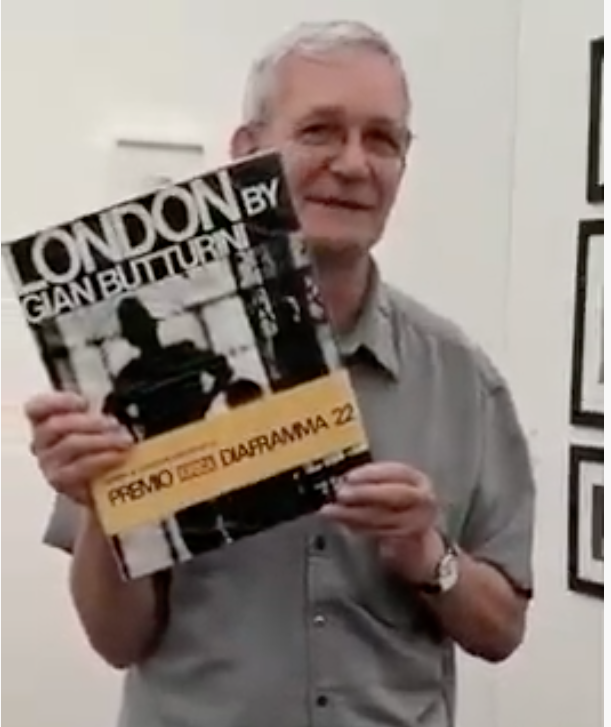
Martin Parr at PhotoLondon 2018 with original LONDON edition, still from video by Butturini Estate
The beginning of an answer to these questions lies in plain view in Ricketts’ tweet from November 2019, in which she refused to retweet anything from ‘@martinparrfdn or the man himself’, and the subsequent thread in which Parr apologised. Reading the apology in February, Chesterton elaborated on the significance of that tweet and its mechanics: ‘Fair play to you Jennie. Achieving what no-one else has ever’[5]; ‘15 days after your tweet. Six months after the issue was first raised. I suspect it was because of the orgs [organisations] you included’[6].
Ricketts’ refusal to retweet Parr was squarely aimed at a Twitter account called @royal_wales. It belongs to the Royal Photographic Society – South Wales Region. Liable to flit this way and that, as we have seen, Ricketts’ public position on whether or not Butturini was racist had nothing to do with the work itself. Rather, it had everything to do with Ricketts’ own scandalous election campaign, which, in 2019, shook the Royal Photographic Society, ‘one of the oldest, well respected, global #Photo organisations’[7], to the core.
News of the Royal Photographic Society’s 2019 elections was not circulated in the press. Following legal advice, however, an independent inquiry was commissioned.[8] The results of that three-month inquiry, in a document entitled REPORT OF THE INQUIRY INTO THE 2019 ELECTION by Michael King, Queen Square Advisory Limited, published on 13 January 2020, continues to be available from the RPS website. Although the inquiry was independent, it necessarily remains partisan as Ricketts, who is mentioned by name no less than 48 times over 28-pages, resigned from her position as trustee and declined to cooperate with the inquiry.[9]
For an outsider, the report is a heady labyrinth of arcane constitutional rules, meaningless names and unfamiliar job titles, but the myriad complaints levied at Ricketts are shocking nonetheless. Members expressed concern that Ricketts seemed to be exploiting a constitutional loophole whereby ‘a co-opted Council member, with no history of involvement in the RPS could end up being President in such a short period of time’ (King, 2020, p.12).
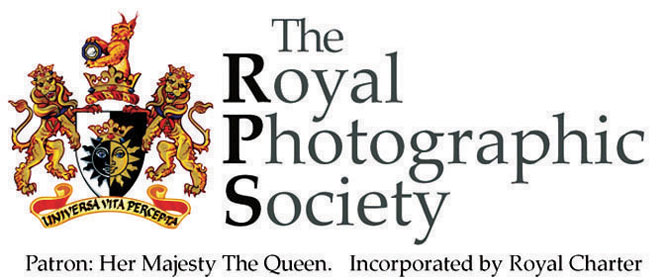 The current president of the RPS, meanwhile, expressed even more serious concerns about ‘A succession of tweets by Jennie Ricketts. Through the election period’, Dr Alan Hodgson explains, ‘these contained information confidential to Council, incorrect facts and comments that could adversely affect our relationship with Kensington Palace’. Hodgson worried, too, about ‘the breaking of confidentiality of Council candidates in the May Council meeting’, and provided the investigator with documentation to evidence these concerns (King, 2020, p.12).
The current president of the RPS, meanwhile, expressed even more serious concerns about ‘A succession of tweets by Jennie Ricketts. Through the election period’, Dr Alan Hodgson explains, ‘these contained information confidential to Council, incorrect facts and comments that could adversely affect our relationship with Kensington Palace’. Hodgson worried, too, about ‘the breaking of confidentiality of Council candidates in the May Council meeting’, and provided the investigator with documentation to evidence these concerns (King, 2020, p.12).
The sheer speed at which Ricketts progressed through the RPS hierarchy was extraordinary. Having apparently been co-opted by the Council in January 2019, officially becoming a trustee in July (owing to the lack of a required RPS membership), with a nomination as President Elect by July, she could have conceivably become President of the RPS by November 2021, or significantly earlier if the President, Del Barrett, chose to retire early. That scheme, however, soon unravelled and, by the summer, before the nominations process drew to a close, some of the membership were proposing a change to the RPS constitution designed to bar Ricketts’ nomination as President Elect (King, 2020, p.13).
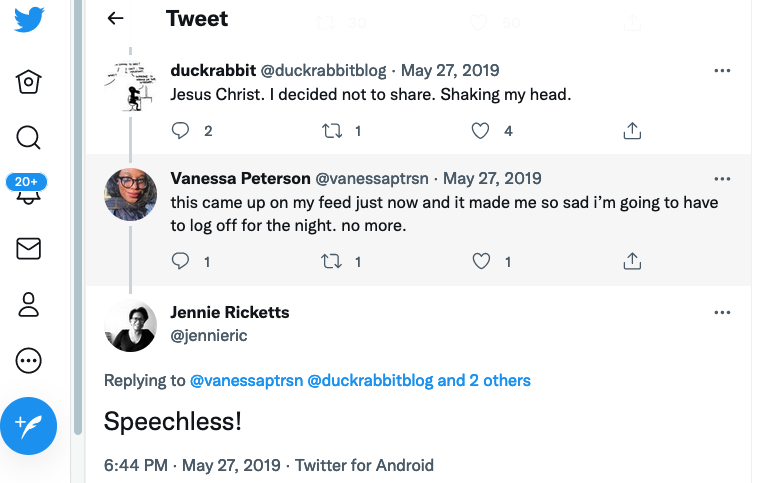
Ben Chesterton-Jennie Ricketts, Butturini tweets 5-27-2019
With her back to the wall, what Ricketts needed was a win. And she found that win in Butturini. ‘Speechless!’ she tweeted. Ricketts resigned from the board in September, not due to ‘personal reasons’ as her aforementioned tweet from that time suggested, but for very political reasons. ‘I would like to make a formal complaint about the recent election process on the grounds that the procedure has been conducted with bias and double standards,’ she wrote to RPS Chief Operating Officer, Mike Taylor, ‘forcing me to withdraw my candidacy and resign as an RPS Trustee’ (King, 2020, p.3).
By the time Ricketts tweeted about Butturini again, on 17 November, when she refused to retweet anything to do with Parr or the Martin Parr Foundation, she was no longer a trustee of the RPS, no longer even a member. Her friend and ally, Del Barrett, the President who had co-opted her to the board in the first instance and with whom she’d worked closely on the Hundred Heroines project, had, less than a fortnight earlier, on 5 November, resigned suddenly.
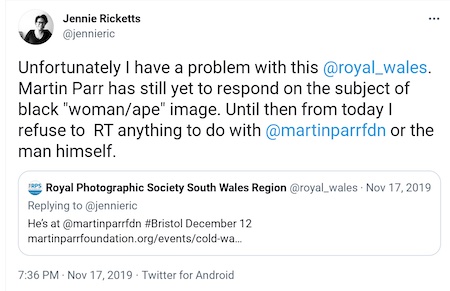
Jennie Ricketts, Martin Parr tweet, 11-17-19
•
The tweet, screenshot above, reaches out to the RPS (South Wales Region) account. It constitutes a sneer, a disgraced Ricketts taking the high ground, defiantly assuming the role of moral arbiter, in the face of the election scandal that had just transpired and decimated the board. RPS (South Wales Region) did not ‘like’ it; did not retweet it; did not reply. (And Ricketts’ own celebration as one of the RPS’s ‘Hundred Heroines’ herself would, eventually, be quietly removed.[10])
Fortunately for Ricketts, however, somebody was reading. Within hours of her tweet, Paul Halliday had replied, ready and raring to go with the main tenets of the Mercedes narrative, appropriating her stunned silence from six months past: ‘I bought the #photography book edited by #MartinParr as a birthday present for my daughter, who is Black’, he tweeted, ‘Later, when I opened the book at home and saw a double page layout of an elderly Black woman juxtaposed with a caged gorilla, I was left utterly speechless.’[11] There and then, Parr-Butturini became the new campaign in Ricketts’ will to power.
 On 21 July 2020, Tom Seymour’s article for The Art Newspaper broke the news of Parr’s stepping down from the Bristol Photo Festival. That evening, in the semi-anonymous, semi-private world of Twitter, Butturini’s detractors would bask in their triumph. ‘[Jennie Ricketts] @jennieric stood up to Martin Parr’, said Chesterton, ‘More than anyone working in the industry she kept the challenge going. This needs to be acknowledged.’[12] ‘Yes’, breathed Halliday, ‘that’s right’.[13] ‘The credit is yours Ben’, replied Ricketts, ‘Thank you for your support. The world would be a different place if there were more people like yourself out there.’[14]
On 21 July 2020, Tom Seymour’s article for The Art Newspaper broke the news of Parr’s stepping down from the Bristol Photo Festival. That evening, in the semi-anonymous, semi-private world of Twitter, Butturini’s detractors would bask in their triumph. ‘[Jennie Ricketts] @jennieric stood up to Martin Parr’, said Chesterton, ‘More than anyone working in the industry she kept the challenge going. This needs to be acknowledged.’[12] ‘Yes’, breathed Halliday, ‘that’s right’.[13] ‘The credit is yours Ben’, replied Ricketts, ‘Thank you for your support. The world would be a different place if there were more people like yourself out there.’[14]
But Ricketts couldn’t publicly front the campaign – the RPS election scandal never reached the news but its existence was a liability nonetheless; and nor could Halliday, whose appearance at this time might have aroused suspicion. So, earlier that day, it had been left to Chesterton to lay down the official narrative, one that recruited Ricketts as an expert opinion, and hid Halliday from view entirely. ‘No one in power wanted to hold Martin Parr accountable for promoting a racist book’, Chesterton told a credulous Seymour, ‘except Mercedes Baptiste Halliday and a couple of her friends. When she did protest, she was almost universally ignored.’[15]
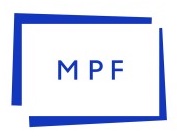 The following month, the Martin Parr Foundation announced a call-out for new trustees; and, by early November, Ricketts would, in a twist of fate, be added to the Martin Parr Foundation board. Before that could take place, old allegiances had to be cast aside. A discreet change in opinion was enough to shake off Halliday:
The following month, the Martin Parr Foundation announced a call-out for new trustees; and, by early November, Ricketts would, in a twist of fate, be added to the Martin Parr Foundation board. Before that could take place, old allegiances had to be cast aside. A discreet change in opinion was enough to shake off Halliday:
The book wasn’t racist, a spread within it was, and a cautionary tale perhaps. We will have to agree to disagree @PaulTHalliday. The industry needs to be targeted, not one flawed individual. Repeating past mistakes helps no one. Reformation doesn’t have to mean annihilation.[16]
•
The betrayed Halliday was incensed. He pounced on the Photography Ethics Centre, where Ricketts had recently spoken, because they’d ‘liked a tweet claiming #MartinParr’s book “wasn’t racist”’[17]; attacked Ricketts again as she became appointed to the board, ‘Didn’t @jennieric conclude that the ‘racist’ book Martin Parr edited wasn’t racist?’[18] Chesterton tried to be diplomatic: ‘I sincerely appreciate that Jennie called @parrstudio out on twitter on a number of occasions.’[19]
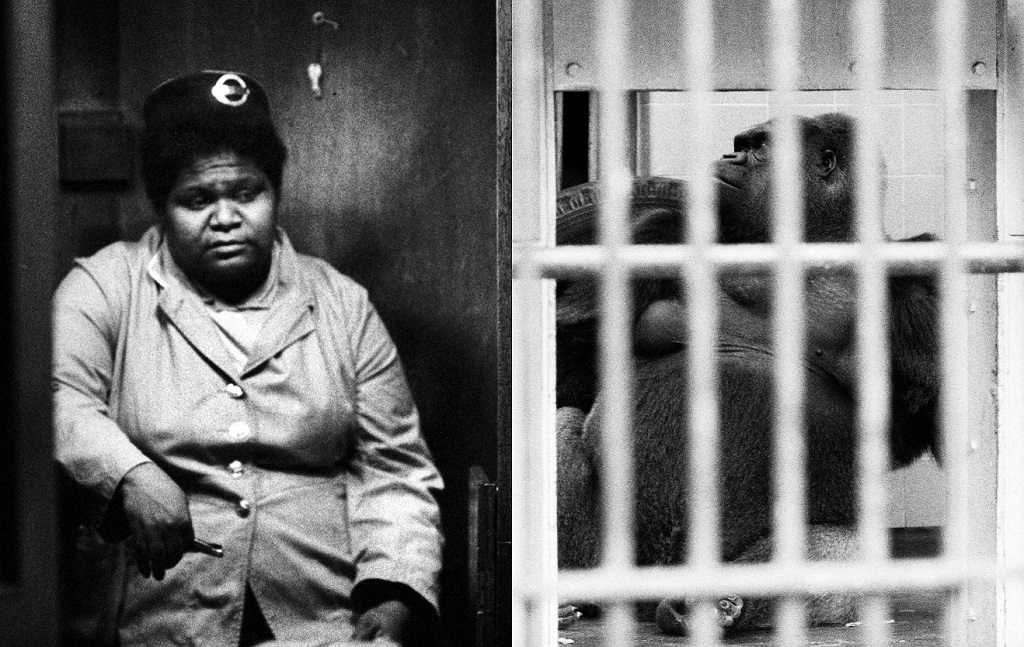
Gian Butturini, London (1969), spread
And so it went on, into the new year: ‘That is precisely the ‘logic’ that informed the defence recently made excusing the publication of a racist book, on the basis that the pairing of a gorilla with a Black woman was ‘racist’, but the book itself ‘wasn’t racist’’[20] wrote Halliday; ‘Cognitive dissonance’[21], chorused Chesterton. Little did either of them know, then, that, over the Christmas period, Ricketts – having been burned by the RPS but now safely ensconced on the boards of both Autograph and Martin Parr Foundation – had changed her opinion once more. In a short statement given to Neumüller, she explained:
My initial reaction to the juxtaposition of a black woman and a gorilla was an emotional response based entirely on the optic presented via social media. Having had time to properly review the context of the imagery and text from the book, I realise it was the wrong conclusion. (Neumüller, 2021, p.153)
And yet, even this short, written statement is itself the result of a cautious but amicable negotiation. ‘I am also a Trustee for Autograph ABP’, wrote Ricketts in an email to Neumüller, ‘and I feel any further involvement on my part will hamper future work with both them and the MPF’. The email goes on to provide an astonishing explanation for Ricketts’ reticence:
Paul Halliday has a history of animosity with both these organisations and has already attempted to paint me in unfavourable light. Which suggests this is an excuse for another agenda as you have rightly guessed. A statement of my position as you have suggested in your Option B will have to serve as the extent of involvement at this stage.[22]
‘Dear Jennie’, Neumüller replied at once, ‘Thank you for your explanations and for allowing me to use the quote. I will try not to involve you any more than necessary, for sure’[23].
•
Neumüller’s article falls way short of the ‘profound analysis’ (2021, p.5) proffered by his editors, or the ‘comprehensive analysis’ (2021, p.137), or ‘scientific context’ (2021, pp.137-8) he himself reaches for. In many respects, Neumüller’s failure to deliver a coherent, documented, detailed, and, above all, believable narrative was inevitable from the start. He comes to the task with the wrong skill set.
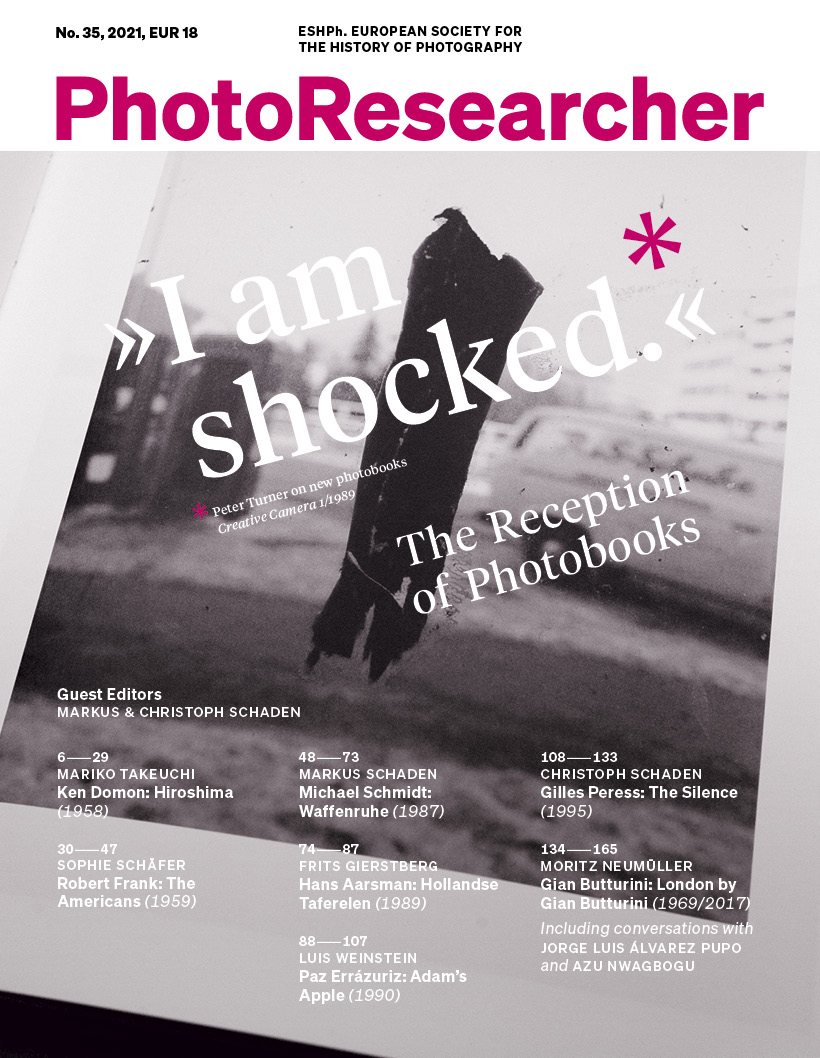
PhotoResearcher, Issue 35 (2021), cover
Intent on brokering a virtual peace accord between two warring factions, on penning an ‘Addendum’ (2021, p.165) like some kind of treaty, he brings a cataloguer’s eye that can see the granular detail but can’t hope to evaluate it. He tries to be an archivist when he ought, more properly, to be a biographer. He desperately looks for stable, ideological contestations and intellectual abstractions that might, somehow, be brought into equilibrium within ‘an academic discourse’ (2021, p.137), when, all along, he should be looking for deeply flawed personalities; inconsistent egos; and ambitious players ready to react, feint, and attack, according to unpredictable and rapidly changing circumstances, even as they unfold.
Neumüller’s becomes an abject failure that is, necessarily, paralysed by disingenuousness: dodgy referencing, trumped-up experts, and pretend statistics; made-up histories and historical anachronism; the suppression of valuable sources; a too-tight tethering to already-contested narratives; and, finally, an honouring of unspoken allegiances to a long-time colleague that over-simplifies, sanitises and, in the final analysis, brutally whitewashes contemporary events.
And this same, present-day history that Neumüller tries so carefully to simultaneously marshal, resolve, and conceal is not without real-world consequence, not without its casualties. Gian Butturini’s children have, for a year, worked tirelessly to salvage their late father’s legacy; at the time of writing, Martin Parr, whose life and work was upended by this unprovoked and protracted attack, lies in Bristol Royal Infirmary, severely ill, a bone marrow cancer, from which there is little to no hope of full recovery. [Click here for a pdf download of a May 2021 statement from Martin Parr on this controversy. — Ed.]

No-one would dispute Neumüller’s concluding assertion that ‘important structural changes in the photographic community and open discussions around the photographic medium’ (2021, p.165) need to happen. But Butturini’s London, introduced by Parr, was never the vehicle with which to make those changes, or initiate those discussions. The pain – the trauma – that has been caused by that book’s unscrupulous and, ultimately, self-seeking detractors has been wholly unjust and far, far too great. In this particular instance, the end does not – can never – justify the means.
Dr Dennis Low
July 2021, London
•
[Author’s update, December 14, 2022: Subsequent to publication of this analysis at Photocritic International there have been several relevant developments:
- The article itself now comes up second in a Google search for “Gian Butturini” — certainly posing a strong challenge to the dominant narrative.
- Brad Feuerhelm conducted a lengthy interview with me on this matter for his podcast, Nearest Truth, published on 13 June 2022. You can listen to it here.
I will provide a continuation of my report on this situation to the readers of Photocritic International sometime in 2023. — D.L.]
[Editor’s note, April 5, 2023: Upon demand by legal counsel for Photo Ireland Festival CLG, I have removed several passages from the above Author’s Update. In a forthcoming follow-up Dr. Low will explore the relevant issues in detail, complete with documentation. — A.D.C.]
•
Notes:
[1] Twitter. (2021). [online] Available at: https://twitter.com/jennieric/status/1286255072532410370 [Accessed 25 Jun. 2021].
[2] T. Seymour. (2020). Martin Parr steps down as artistic director of Bristol Photo Festival after student’s anti-racism campaign. [online] Theartnewspaper.com. Available at: https://www.theartnewspaper.com/news/martin-parr-stood-down-from-bristol-photo-festival-after-student-anti-racism-campaign [Accessed 11 Jun. 2021].
[3] T. Seymour. (2020). Martin Parr’s resignation from photo festival sparks “cancel culture” debate. [online] Theartnewspaper.com. Available at: https://www.theartnewspaper.com/news/martin-parr-s-festival-abdication-sparks-cancel-culture-debate [Accessed 25 Jun. 2021].
[4] Twitter. (2021). [online] Available at: https://twitter.com/duckrabbitblog/status/1285688006138048512 [Accessed 25 Jun. 2021].
[5] Twitter. (2021). [online] Available at: https://twitter.com/duckrabbitblog/status/1228032215776419840 [Accessed 25 Jun. 2021].
[6] Twitter. (2021). [online] Available at: https://twitter.com/duckrabbitblog/status/1228031219981484032 [Accessed 25 Jun. 2021].
[7] Twitter. (2021). [online] Available at: https://twitter.com/jennieric/status/1133369170387767297 [Accessed 25 Jun. 2021].
[8] Royal Photographic Society of Great Britain. (2019). Trustees’ Annual Report and Consolidated Accounts for the year ended 31 December 2019. [online] Available at: https://rps.org/media/rs0ns13d/2019-annual-report-and-accounts.pdf [Accessed 7 Jul. 2021], p.6.
[9] M. King. (2020). ROYAL PHOTOGRAPHIC SOCIETY OF GREAT BRITAIN CC Registration No 1107831 REPORT OF THE INQUIRY INTO THE 2019 ELECTION. [online]. Available at: https://rps.org/media/nbebf5vy/rps-inquiry-report-13-1-20.pdf [Accessed 25 Jun. 2021].
[10] Hundred Heroines. (2021). [online] Available at: https://hundredheroines.org/heroine/jennie-ricketts/ [Accessed 7 July 2021].
[11] Twitter. (2021). [online] Available at: https://twitter.com/PaulTHalliday/status/1196213945591369728 [Accessed 25 Jun. 2021].
[12] Twitter. (2021). [online] Available at: https://twitter.com/duckrabbitblog/status/1285688006138048512 [Accessed 25 Jun. 2021].
[13] Twitter. (2021). [online] Available at: https://twitter.com/PaulTHalliday/status/1285692687790804994 [Accessed 25 Jun. 2021].
[14] Twitter. (2021). [online] Available at: https://twitter.com/jennieric/status/1285689647138562048 [Accessed 25 Jun. 2021].
[15] T. Seymour. (2020). Martin Parr steps down as artistic director of Bristol Photo Festival after student’s anti-racism campaign. [online] Theartnewspaper.com. Available at: https://www.theartnewspaper.com/news/martin-parr-stood-down-from-bristol-photo-festival-after-student-anti-racism-campaign [Accessed 11 Jun. 2021].
[16] Twitter. (2021). [online] Available at: https://twitter.com/jennieric/status/1286310360170012673 [Accessed 25 Jun. 2021].
[17] Twitter. (2021). [online] Available at: https://twitter.com/PaulTHalliday/status/1286562559164919808 [Accessed 25 Jun. 2021].
[18] Twitter. (2021). [online] Available at: https://twitter.com/PaulTHalliday/status/1327289095845015555 [Accessed 25 Jun. 2021].
[19] Twitter. (2021). [online] Available at: https://twitter.com/duckrabbitblog/status/1327311114850471936 [Accessed 25 Jun. 2021].
[20] Twitter. (2021). [online] Available at: https://twitter.com/PaulTHalliday/status/1345759112353689600 [Accessed 25 Jun. 2021].
[21] Twitter. (2021). [online] Available at: https://twitter.com/duckrabbitblog/status/1345873977227571202 [Accessed 25 Jun. 2021].
[22] Email from Jennie Ricketts to Moritz Neumüller, 3 December 2020.
[23] Email from Moritz Neumüller to Jennie Ricketts, 3 December 2020.
•
© Copyright 2021 by Dennis Low. All rights reserved. For reprint permissions, other usages, and questions, please contact the author: dennis(at)takemetothekittens(dot)com.






Since Tom Seymour turns up here, it’s maybe worth noting that Tom and The Art Newspaper are not exactly a crack team of top journalists.
I document numerous issues with their reporting on Sally Mann in this note:
https://photothunk.blogspot.com/2021/12/getting-it-right.html
Interesting how none of the principals have thus far, showed up.
Of course they haven’t. They have, however, begun to tweet about it, in entirely predictable patterns. Of course.
Wow. Almost a month later, and it’s as if this article didn’t exist. The usuals are compulsively retweeting the same, discredited (as above) talking points, if anything with added, mouth-frothing fury. Shades of the ‘stolen election’!